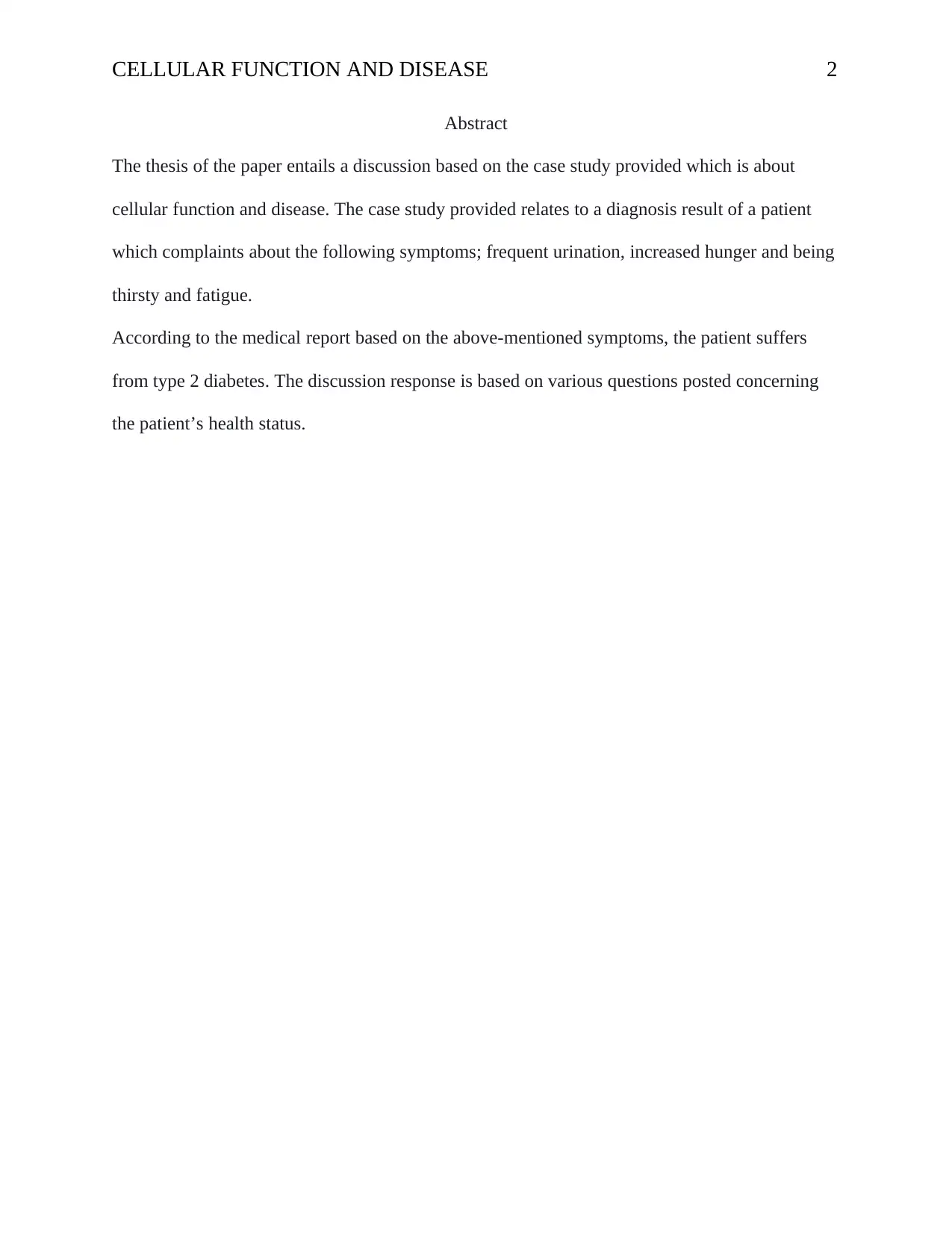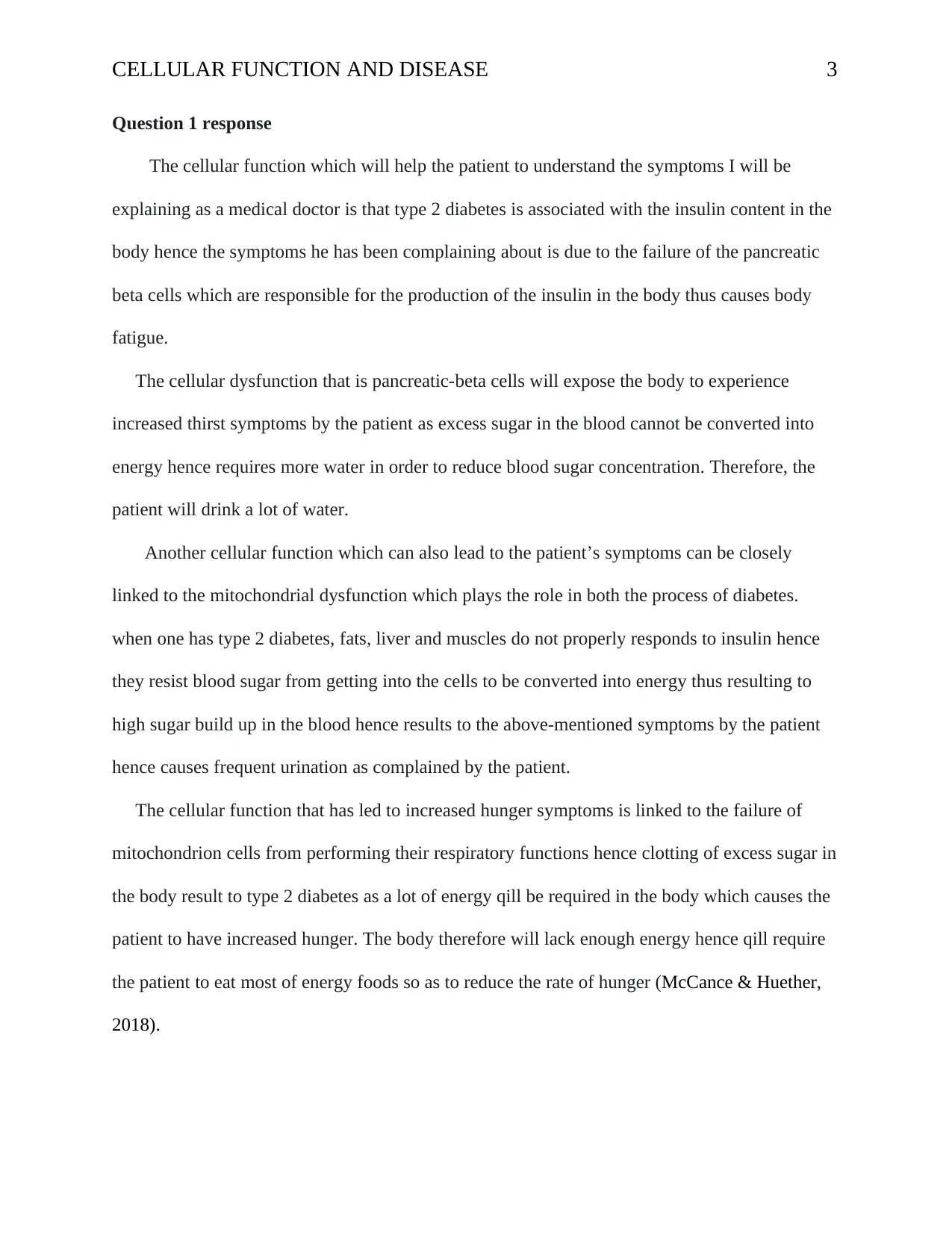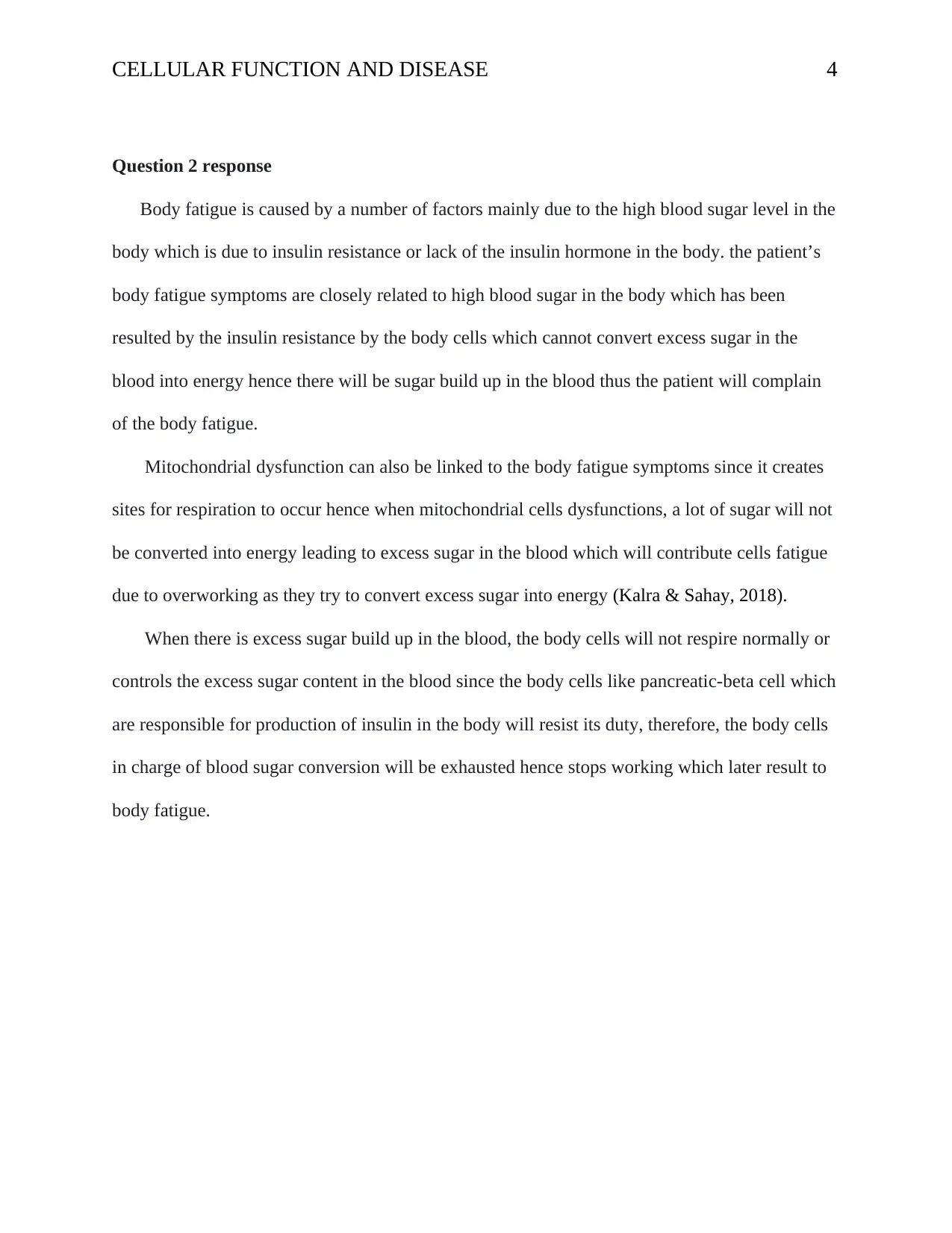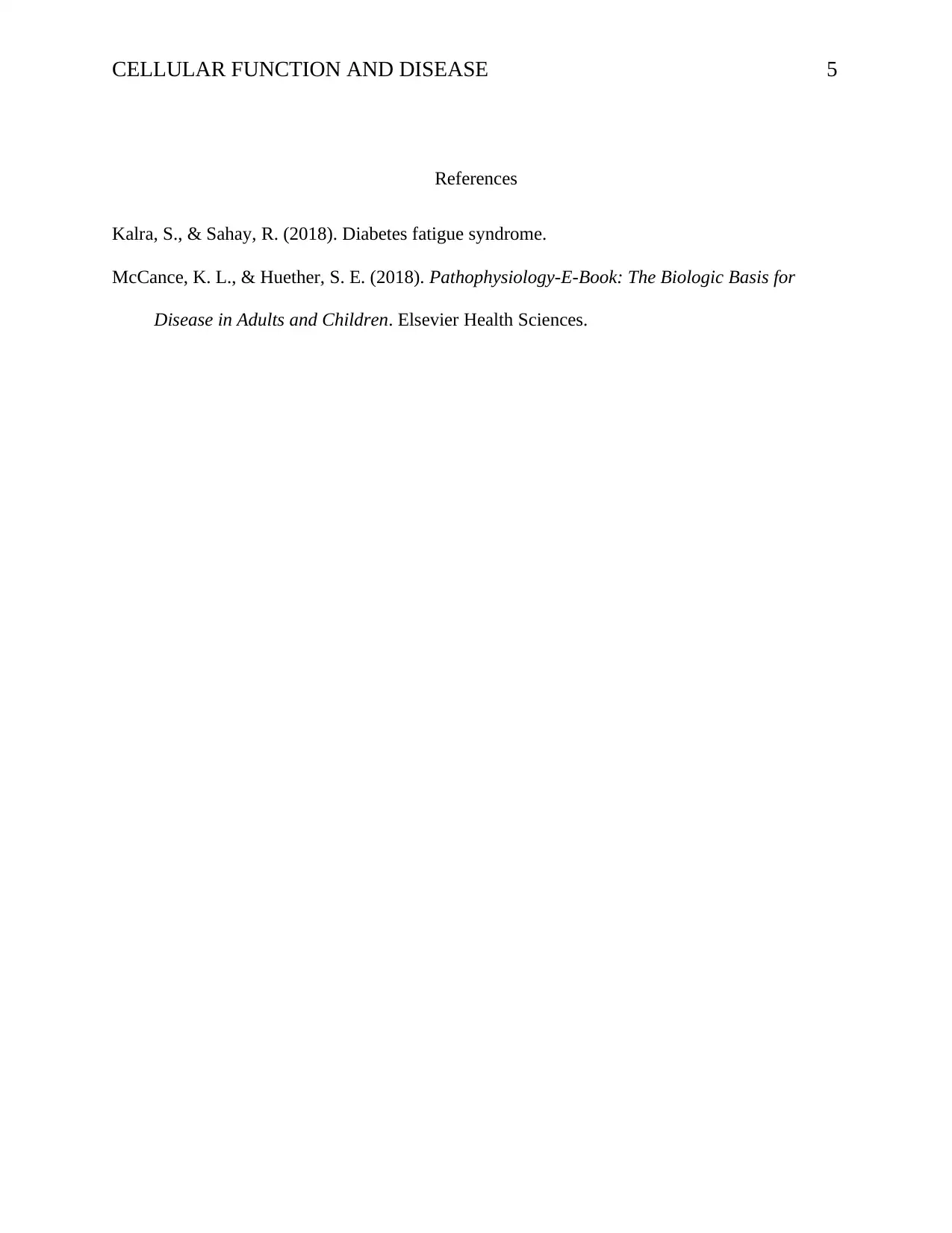Cellular Function and Disease: Analysis of Type 2 Diabetes Case Study
VerifiedAdded on 2022/11/30
|5
|719
|379
Case Study
AI Summary
This case study examines a patient's symptoms of frequent urination, increased hunger and thirst, and fatigue, which led to a diagnosis of type 2 diabetes. The assignment delves into the cellular dysfunctions associated with the disease, particularly focusing on the failure of pancreatic beta cells to produce insulin, leading to insulin resistance. It explores how mitochondrial dysfunction contributes to the symptoms, including body fatigue and the body's inability to properly convert sugar into energy. The analysis highlights the cellular mechanisms behind increased thirst due to high blood sugar, and increased hunger due to lack of energy. The study references the importance of understanding cellular function in the context of disease and explains the physiological processes disrupted by the disease.
1 out of 5












![[object Object]](/_next/static/media/star-bottom.7253800d.svg)